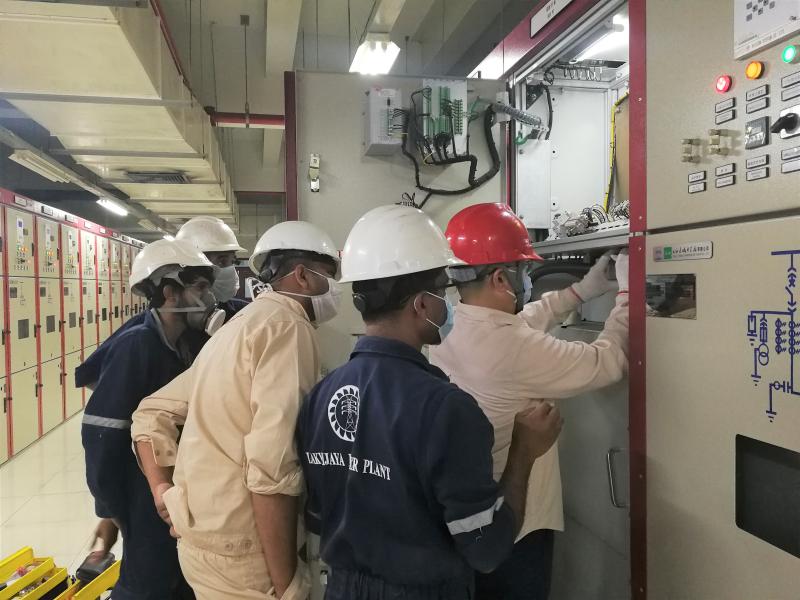Recently I spoke at the Belt and Road Trade and Investment forum in Beijing organised by China Chamber of International Commerce. My focus was on the way the digital silk road and the Belt and Road Initiative enables communities to expand and join the 21st century economy. These communities include those in Central Asia reaching into Europe and the cluster of landlocked hinterlands in other parts of Asia.
The digital silk road is an integral part of the Belt and Road initiative. It’s the soft infrastructure that brings added benefits to the hard infrastructure so often associated with the Belt and Road Initiative (BRI). A fast rail system relies on software to manage the train on the rail tracks, to handle scheduling and co-ordinate ticketing. This soft infrastructure also includes the use of digital silk road blockchain applications to streamline customs procedures, so as to reduce cross-border trade friction and speed up customs clearance processes.
A significant benefit is the potential use of China’s DCEP sovereign digital currency to enable frictionless cross-border financial transaction processes. This reduces the cost of doing business and opens cross-border business to new participants which in turn leads to expansion of export markets.
But just as importantly, the digital silk road brings opportunities to areas that are previously ignored by the world economy. The digital silk road allows these communities to move rapidly into the 21st century economy because of improved physical and soft infrastructure. The digital silk road offers the ability to broaden their trade base so they can increase incomes and lift the common prosperity.
These expanding economies are also new markets for investors. The flow of capital follows the economic growth and this is enabled by access to 21st century digitally-based processes which range from improving farm management to providing banking services.

Chinese and Sri Lankan staff members conduct maintenance work at Lakvijaya Power Station in Puttalam, Sri Lanka, Apr. 11, 2020. (Photo/Xinhua)
The digital silk road delivers options for those who were previously unable to access to bank services. It provides access to capital that breaks the grip of greedy money lenders. This helps to break the cycle of poverty because people can more easily invest in the growth and improvement of their business activities. The digital silk road empowers people by providing access to advanced services that use AI and blockchain technology that is delivered digitally.
By applying all those digital technologies, the farmer is now able to sell his produce in a distant market place where there are better prices because the hard BRI road and rail infrastructure makes this possible. Buts it’s the soft infrastructure that makes the sales and delivers the real benefits. The digital silk road allows him to compare prices and select the best market and the best time to sell.
The digital silk road allows him to easily complete transactions across borders, secure in the knowledge that blockchain technology will ensure that payment is swift, accurate and completed without onerous fees. He will not need a bank account to achieve this as the DCEP-style digital wallet will meet his immediate banking needs.
These same benefits in cross-border trade efficiency are available to larger companies, organisations, and Governments. The Digital Silk Roads’ ability to replace paper documents with unique block-chain enabled secure certification eliminates border delays and corruption.
The digital silk road delivers the benefits of blockchain technology. The big data traces the origins of food for consumers. It reliably certifies that the food you eat is grown sustainably and that it is healthy to eat. Food from far-flung places can now compete with food from more well-known sources.

Chinese medical expert Yang Honghui (L) instructs an Iraqi medical worker on operating a nucleic acid detection machine at a new Polymerase Chain Reaction (PCR) lab in Baghdad, Iraq, Mar. 26, 2020. (Photo/Xinhua)
The digital silk road delivers the blockchain technology that enables your product, or service, to travel seamlessly across borders and meet all the necessary compliance requirements by using a single application rather than a fist-full of documents in multiple languages.
The digital silk road allows the farmer to manage crops and livestock with the most modern environmental monitoring methods. This boosts agricultural efficiency and food production without damaging the environment. It makes an essential contribution to achieving COP 26 targets because it enables accurate measurement of baselines and progress.
These Digital Silk Road benefits are delivered most effectively when they are part of an agreed and accepted global digital infrastructure. The danger is the development of two competing, but incompatible systems of digital standards.
The preferred solution is the promotion of digital silk road standards within RCEP ASEAN, SCO and other multilateral platforms involved in setting cross-border trade protocols, blockchain and AI standards.
Peak business organisations like the China Chamber of International Commerce, The Australia China Business Council and the Silk Road International Chambers of Commerce play an important role by bringing together international business organisations and industry associations to discuss and make these standards.
The promotion and acceptance of standards is also supported and enabled by the widespread use of BRI solutions by business so they set de facto standards.
The digital silk road is an essential component of the Belt and Road Initiative because it enables the full utilisation of the physical BRI infrastructure.
The article reflects the author’s opinions, and not necessarily the views of China Focus.